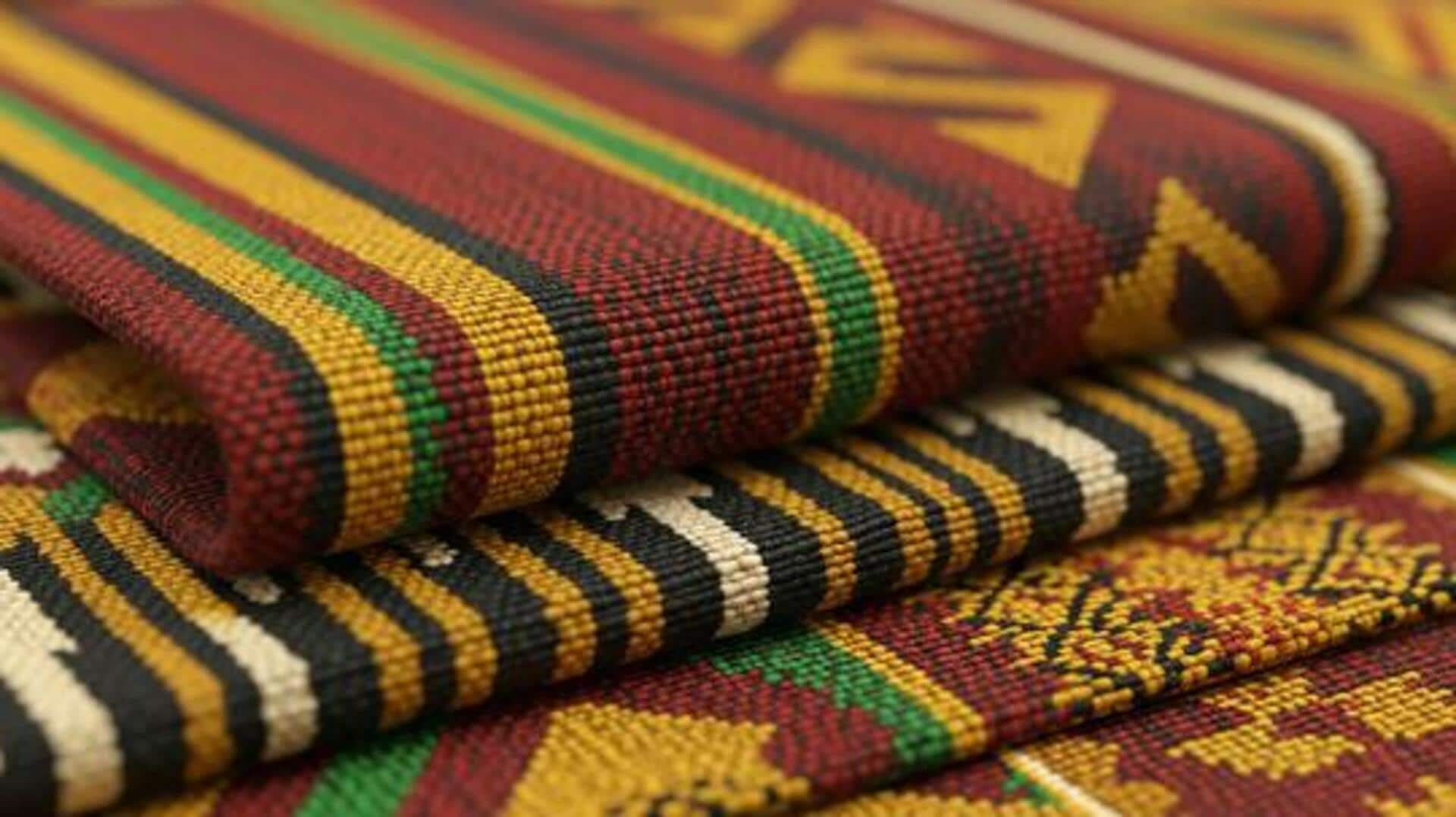
From weaving to dyeing: Traditional textile methods
What's the story
Africa's textile heritage is a colorful tapestry of history, culture, and artistry. The continent's diverse textile techniques, passed down generations, reflect cultural identities of various communities but also their ingenuity and craftsmanship. From intricate weaving patterns to unique dyeing processes, African textiles offer a peek into the continent's rich cultural legacy.
Kente weaving
Kente cloth: A symbol of royalty
Hailing from Ghana, Kente cloth is famous for its bright colors and geometric patterns. Traditionally, it's worn by the royalty and each design has a specific meaning attached to it in context to history or proverbs. The fabric is woven by interlacing silk or cotton threads on a loom to create vibrant strips that are sewn together. This process requires precision and skill, making Kente cloth highly valued, culturally as well as economically.
Indigo dyeing
Adire: The art of indigo dyeing
Adire is a traditional Nigerian textile that is famous for its indigo-dyed patterns produced by resist-dye techniques. Artisans use techniques such as tying, stitching, or applying wax to the fabric before dyeing it in natural indigo vats. This creates stunning and culturally rich intricate designs. Adire is a testament to the creativity of Yoruba women, who have perfected this craft over centuries.
Mud cloth technique
Bogolanfini: Mud cloth mastery
Bogolanfini, or mud cloth, hails from Mali, where cotton fabric is painted with fermented mud, forming symbolic motifs. Each pattern narrates a story or communicates messages regarding social status or historical events in the community. The fabric is soaked in natural dyes before mud designs are applied by hand—an arduous process that requires patience and expertise.
Printed fabric
Shweshwe: South Africa's printed fabric tradition
Shweshwe is a printed cotton fabric widely used in South Africa. It comes with intricate geometric patterns in different colors- blue, brown, red, etc. From what we know, European settlers introduced it during colonial times, but it later became a part of traditional attire for various ethnic groups in the Southern Africa region. It is produced by printing designs on plain fabrics using copper rollers.